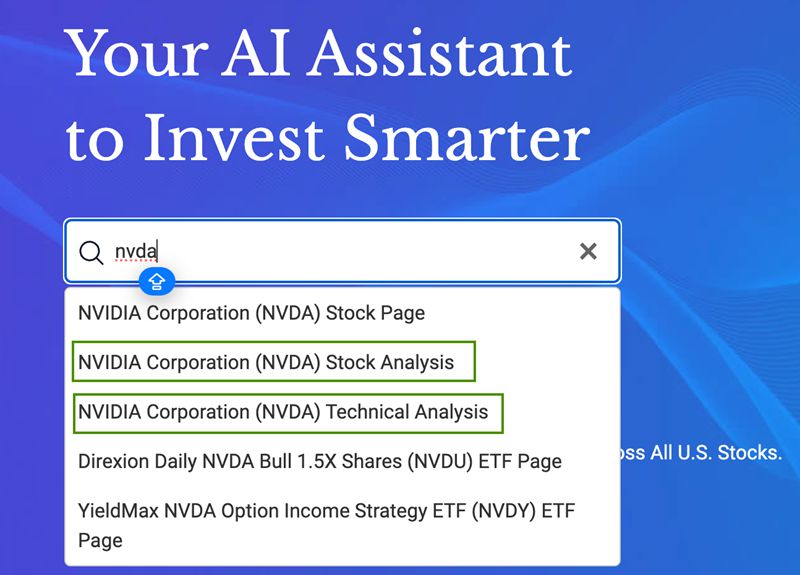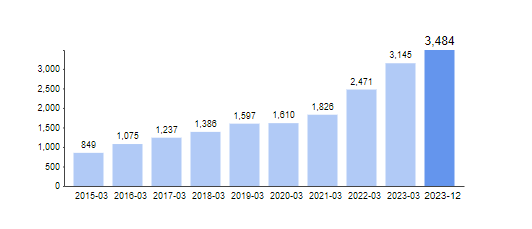20 Best Ways For Choosing Ai Trading Software Sites
20 Best Ways For Choosing Ai Trading Software Sites
Blog Article
Top 10 Tips To Evaluate The Quality Of Data And The Sources For Ai-Powered Stock Analysis And Forecasting Trading Platforms
To provide accurate and reliable information, it's important to check the sources and data that are utilized by AI trading and stock prediction platforms. Poor data quality may result in inaccurate predictions and financial losses. It could also lead to mistrust for the platform. Here are 10 tips to evaluate data quality and its source:
1. Verify the data sources
Check the source: Make sure that the platform has information from reliable sources (e.g. Bloomberg, Reuters Morningstar or exchanges such as NYSE and NASDAQ).
Transparency - The platform should be transparent about its data sources, and regularly update them.
Beware of dependencies on a single source: A reliable platform often aggregate data across multiple sources in order to limit mistakes and bias.
2. Examine the freshness of data
Do you have real-time or delayed data? Determine whether the platform offers real-time or delayed data. Real-time information is essential to ensure that trading is active. Delayed data can suffice for analysis over the long-term.
Update frequency: Make sure you check when the data has been changed.
Accuracy of historical data Make sure that data is uniform and free of irregularities or gaps.
3. Evaluate Data Completeness
Search for missing data. Look for gaps in the historical data, missing tickers and incomplete financial statements.
Coverage - Make sure that the platform you choose covers all stocks, indices and markets that are relevant to your trading strategies.
Corporate actions: Verify if the platform accounts for stock splits, dividends, mergers as well as other corporate actions.
4. Accuracy of Test Data
Cross-verify data: Compare the data of the platform with other trusted sources to ensure the accuracy of the data.
Error detection: Search for a mismatch in pricing, incorrect financial metrics, or other outliers.
Backtesting. Strategies can be tested back using historical data and then compare the results with the results you were expecting.
5. Examine Data Granularity
Level of detail - Make sure you can find the most precise information, like intraday volumes as well as prices, bid/ask spreads and ordering books.
Financial metrics: Make sure the platform is able to provide detailed financial statements such as income statement, balance sheet and cash flow. Also, check if it has key ratios such as P/E (P/B), ROE (return on equity) etc. ).
6. Check for Data Cleaning and Processing
Data normalization - Ensure that the platform is able to normalize your data (e.g. adjusts dividends or splits). This helps help ensure uniformity.
Outlier handling: Verify the way in which the platform handles outliers or anomalies in the data.
Data imputation is missing Make sure to check if your platform is using reliable methods for filling in the missing data.
7. Examine the data consistency
Timezone alignment: Ensure all data is aligned to the same timezone, to avoid differences.
Format consistency: Ensure the data is presented consistently.
Cross-market consistency: Ensure that data from multiple markets or exchanges is harmonized.
8. Assess Data Relevance
Relevance to the trading strategy Ensure the data aligns with your style of trading (e.g., technical analysis or quantitative modeling, fundamental analysis).
Feature selection: Verify that the platform offers appropriate features that can improve forecasts (e.g. sentiment analysis macroeconomic indicator and news data).
Review Data Security Integrity
Data encryption: Ensure that the platform is using encryption for data transmission and storage.
Tamper-proofing : Make sure that the data has not been manipulated by the platform.
Compliance: Find out whether the platform is in compliance with data protection regulations.
10. Transparency Model for AI Platform Tested
Explainability: Make sure the platform provides insights into the way in which the AI model utilizes the data to generate predictions.
Bias detection - Check whether your platform actively monitors models and data for biases.
Performance metrics: To determine the accuracy and reliability of predictions, evaluate the platform's performance metrics (e.g. accuracy, precision, recall).
Bonus Tips
Reviews and reputation of users - Research feedback from users and reviews to evaluate the platform reliability and data quality.
Trial period. Use the free trial to check out the features and data quality of your platform before you buy.
Customer support: Check that the platform has a solid customer support to assist with questions about data.
By following these guidelines, you to assess the quality, source, and accuracy of stock prediction systems based on AI. View the top ai stock trading info for blog recommendations including ai options trading, best ai stock, ai copyright trading bot, trader ai intal, trading with ai, ai trader, ai stock market, ai trading platform, best ai for trading, investment ai and more.
Top 10 Tips To Assess The Updating And Maintenance Of Ai Stock Predicting/Analysing Trading Platforms
The maintenance and updates of AI trading and stock prediction platforms are essential to ensure they remain effective, safe and in line with the changing market conditions. Here are the 10 best suggestions to analyze their update and maintenance methods:
1. The frequency of updates
Tip: Check how often the platform updates (e.g., weekly or monthly, or quarterly).
What is the reason? Regular updates indicate the active development of market trends and the responsiveness to market changes.
2. Transparency in Release Notes
Read the release notes on your platform in order to determine what improvements and modifications have been made.
The transparent release notes demonstrate that the platform is committed to continuous advancement.
3. AI Model Retraining Schedule
Tip: Ask when the AI models are trained with new data.
The reason: As markets shift and models change, they must adapt in order to stay accurate and relevant.
4. Correction of bugs and issues
Tip Assess how quickly a platform addresses the bugs that users report or fixes technical problems.
Reason: Rapid fix for bugs helps ensure the platform's reliability and functionality.
5. Updates to Security
Tips Verify that the security protocols of the platform are frequently updated to protect the user's data and trading transactions.
Why: Cybersecurity plays an important role in financial platforms. It assists in protecting against fraud and breaches.
6. Integrating New Features
TIP: Find out the latest features that are being introduced by the platform (e.g. advanced analytics or data sources, etc.) in reaction to feedback from users or market trends.
Why: Feature updates demonstrate creativity and responsiveness to the needs of users.
7. Backward Compatibility
Tip : Make sure updates don't disrupt existing functionality or require significant configuration.
Why is this: Backwards compatibility allows for users with a smooth experience during transitions.
8. Communication with users during maintenance
Consider evaluating the way in how your platform communicates to users of planned maintenance or outages.
Why: Clear communication minimizes disruptions and builds trust.
9. Performance Monitoring and Optimization
TIP: Make sure the platform continuously monitors the performance metrics (e.g. precision, latency) and then optimizes the system.
What's the reason? Continuous optimization ensures the platform remains functional and scalable.
10. Conformity to Regulatory Changes
Tip: Determine if the platform offers new options or policies that conform with regulations governing financial transactions and data privacy laws.
What's the reason? Compliance with regulations is necessary to avoid legal liabilities and ensure consumer trust.
Bonus Tip User Feedback Integration
Verify that maintenance and updates are based on user feedback. This shows an attitude towards users and a firm determination to make improvements.
When you look at the above factors, you will be able determine whether or you are able to determine whether or AI trading and stock prediction platform you select is well maintained, up-to-date, and capable adapting to market dynamics. Read the best the advantage about investing ai for more info including canadian ai stocks, ai investing, ai stock market, ai based trading platform, ai invest, chart analysis ai, ai stocks, ai stock, ai chart analysis, using ai to trade stocks and more.